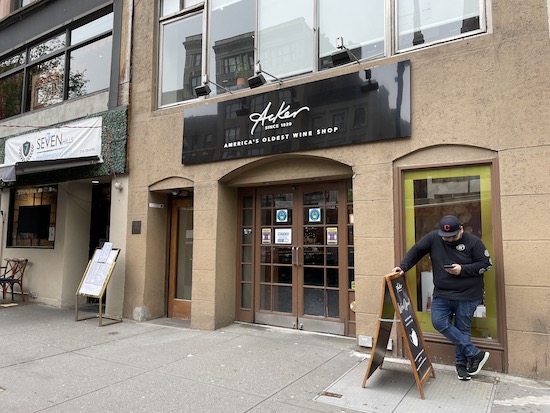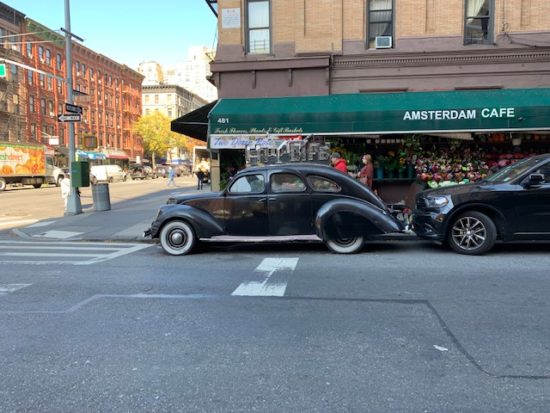
By Carol Tannenhauser
There is a small section of the Upper West Side separated from the rest by its City Council district. Located in the northeastern corner of the neighborhood, from West 96th Street to West 110th, Broadway to Central Park West, it is a rectangle on the map, known as Manhattan Valley.
Though geographically part of the Upper West Side (which runs from West 59th Street to West 110th, park to river), Manhattan Valley currently “belongs” to City Council District 7, while the rest of the Upper West Side comprises District 6. District 6 is represented by Helen Rosenthal, and District 7 by Mark Levine, whose reach extends northward from there, along the Hudson River to Washington Heights, around West 160th Street. Rosenthal and Levine will both be term limited out of office at the end of this year.
If you think Manhattan Valley is politically misplaced, note that it is much closer to its corporal self today than it was a decade ago, when it was actually part of District 8 in East Harlem.
Levine explained that, before his two terms, Manhattan Valley was represented by former Council Speaker Melissa Mark-Viverito from East Harlem. Manhattan Valley had been placed there, according to Levine “to ensure that communities of color were not disempowered in the Council.”
“Traditionally — and to some extent today, only less so — Manhattan Valley has been overwhelmingly a community of color, with a large African-American community in the upper 90s and, to some extent, the Douglass Houses, and a large Latino community in much of the neighborhood surrounding Manhattan Valley,” said Levine, who is currently running for Manhattan Borough President.
“Then, in 2011, when they were redistricting after the last census, there was a push to make the districts more compact,” he continued. “There are also population constraints to consider. It is around 170,000 people per district. The Upper West Side wanted to keep Columbus Circle as its southern border, and, to do that, there was only so far north District 6 could extend. They decided Manhattan Valley was a better demographic fit for District 7, which comprises West Harlem and Washington Heights.”

That may be changing, according to Levine. “In the last 10 years, there has been an increasing number of Columbia college students moving into apartments in Manhattan Valley. Also, Park West Village (a three-building complex on CPW between 97th and 100th Streets, originally built as government-subsidized middle-income housing) was sold.
“There has been an influx of wealthier people into Park West Village,” Levine said. “Rents and asking prices have soared. Douglass Houses remains, thankfully, affordable, but they’ve been plagued by chronic underfunding. So, it’s a real dichotomy, with parts of the neighborhood thriving economically, and parts, just blocks away, struggling. Gentrification is a real threat to Manhattan Valley,” he added. “Landlords are buying up old tenements to push out long-term tenants, and bring in those who can pay a lot more.”
That is why Levine says he sponsored the “Right to Counsel Law”, which passed in the City Council last week, “guaranteeing legal representation to all low-income tenants in the city facing eviction in housing court.”
So, who do Manhattan Valley-ites identify with: the Upper West Side, or the neighborhoods to the north? Levine sees a third option.
“First off, there’s a very strong local neighborhood identity. I think most people would say, yes, they’re part of the Upper West Side, but they really do consider themselves to be a unique and separate community. It’s wonderfully diverse, with so many great nonprofits, social service providers, active tenant associations, and deep civic engagement that has made it a wonderful place to work. I think that people identify with me as their council member. Whether they’re aware that their district extends to Washington Heights, I think the more politically, civically minded people are.”
Twelve candidates are vying for Levine’s City Council seat in the June 22nd Democratic Primary, according to Levine’s press secretary, Winthrop Roosevelt. City & State reported this week that there are 15 candidates. And amny put the number in April at 14. We are linking to both articles, which contain short interviews with most of the candidates.
Manhattan Valley residents, let us know how you feel about all of this in the comments.








Well, Bloomingdale (that is, the area north of 96th and west of Broadway) is just as far north as Manhattan Valley, so the “we needed to have a northern cutoff” explanation seems…a little shaky.
Personally, I find the more demographically mixed upper reaches of the UWS more appealing to live in.
Other strange thing not mentioned is that the pink area between 59 and 96 extends west over the river to the border. For some reason this river area doesn’t extend north or south of these streets.
I live just within the District 7 border in Manhattan Valley and certainly identify more with the UWS than I do communities to the north. There’s plenty to enjoy in Manhattan Valley and points northward but the center of gravity in Manhattan is without question south of 96th street.
I disagree with Mark Levine that the neighborhood has it’s own identity, unless that identity is no mans land caught between the core UWS and Morningside Heights.
I think the 24/7 cop parking lot on 100th St adds to the feeling of separation for that part of the neighborhood. It’s like crossing a river.
This creates a wall that crosses from Central Park to Riverside. Douglas Housing was constructed in such a way in order to protect the southern part of the UWS from its’ northern residents. Only a few years ago the residents of West End Avenue wanted the northern end of the avenue closed to prevent people from uptown from traveling through their community.
The Bloomingdale branch of the NY Public Library is in Manhattan Valley, so these distinctions have more to do with real estate than local history. The real question is why this important branch has been closed for over two years, supposedly for renovation. You can guess the answer.
I strongly agree with CM Levine’s observation that Manhattan Valley has its own identity. Option #3 for me!
Thank goodness Helen Rosenthal will be gone.
When Rosenthal first ran for the Counci 8 years ago she used as her slogan: “An old fashioned West Side liberal.”
She turned out to be an old-fashioned West Side radical leftist extremist who is one of the best friends the rampaging violent criminals in our city have. Yes, she gives devoted constituent service–but she is nonetheless a committed enemy of law and order which incidentally is indispensable to justice.
I have lived in Manhattan Valley for close to 45 years and have been “civically engaged” as the saying goes throughout that time. I am proud of our distinct identity. I lobbied and testified before the redistricting commission to have Manhattan Valley located within a single City Council District — it was previously split along Amsterdam Avenue. When I moved to the neighborhood in the late 1970’s it was part of a Central Harlem City Council District. In addition to Douglass Houses, a large NYCHA project, we have many Section 8 units, several HDFC’s as well as several supportive housing social services residences. You have to go back to the 1970’s to understand the history of this neighborhood. Widespread abandonment of small buildings by landlords for non payment of taxes, the city taking -ownership and then selling to non profits to develop as supportive housing. We have great transportation, great parks. The influx of Columbia students in the wake of gentrification did mean that as opposed to having a long term resident population they were non voting transient residents who quite understandably were not invested in the community. When I moved here in 1976 and up until the 1990’s no Columbia student would venture south of 110th. WE are a welcoming neighborhood with very few coops and condos so we depend on renters and responsible landlords to contribute to our quality of life
Are you telling me that I don’t live on the UWS after all? Who knew? Should I stop subscribing to the WSR?
Manhattan Valley is a segregated community….it is identified as an official impoverished block by tge Federal government, however the surrounding blocks are clearly affluent and mostly White. For decades the council members and Community Board 7 have directed the vast majority of housing for low/no income people into this community. The central business area which is Columbus Avenue has a tradition of a vacancy rate between 25-40%. Drugs and violent crime prevail and for years this was ignored by CB 7 and the political officials. This carve-out is intentional and it was constructed in order to create a contained space of drugs and violence and to racially and economically steer compromised people into this specific area. By doing this opportunities are limited for the residents and those affluent blocks will remain protected and safe.
Why do they insist on calling it Manhattan Valley. It’s Bloomingdale, always been. I went to PS 145, a.k.a The Bloomingdale school. I got my books at the Bloomingdale Library. both of these establishments are in what they now call Manhattan Valley?
As noted in the article, in the redistricting setup before the current lines, much of the upper end of the Upper West Side was attached to the 8th CD in East Harlem. We were represented by West Sider Phil Reed for 8 years. East Harlem didn’t really like the idea of the West Side having such a big role in their Council district so that arrangement was scrapped and Manhattan Valley was added to the 7th District.